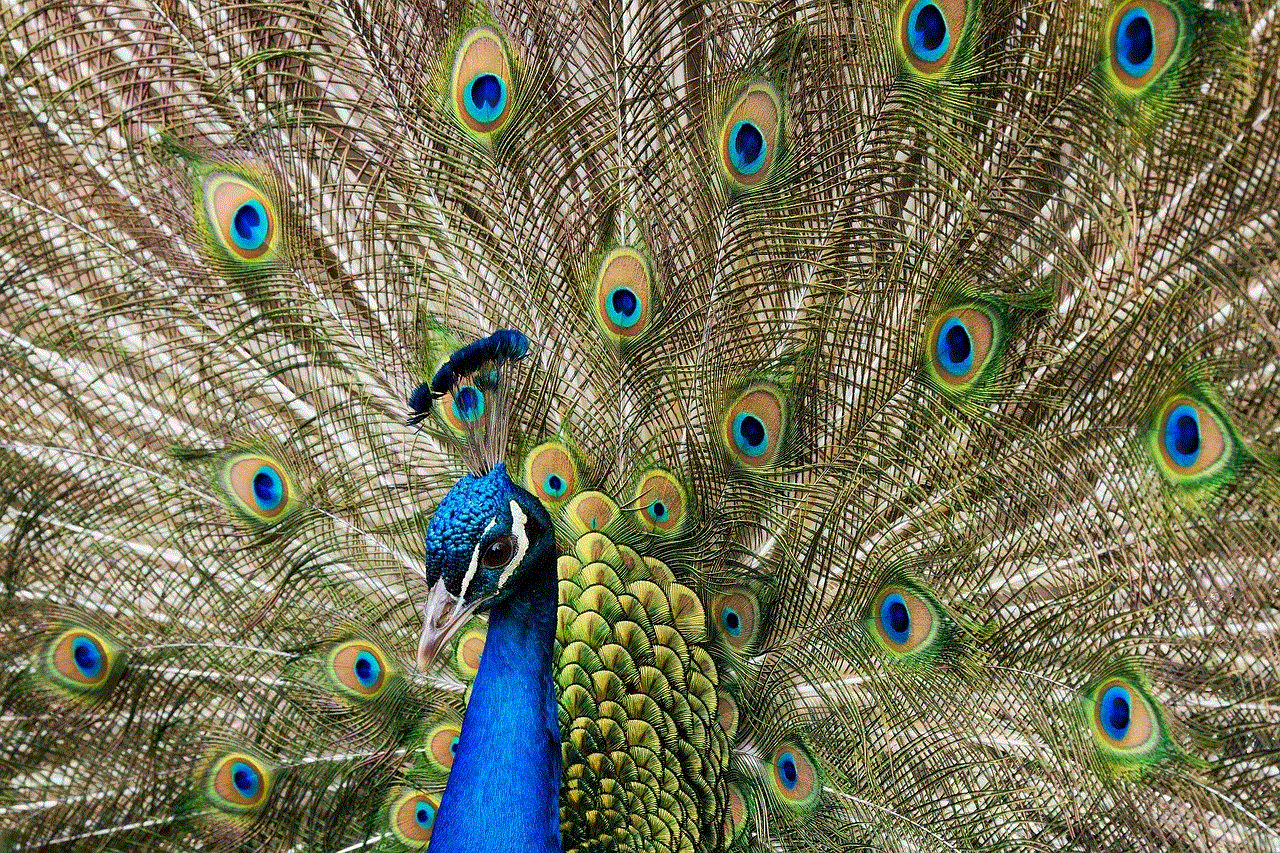how to buy snapchat premium
Title: A Comprehensive Guide on How to Buy Snapchat Premium
Introduction:
Snapchat has revolutionized the way we communicate and share moments, and its popularity has soared over the years. As the platform continues to evolve, many users are interested in exploring the additional features and content available through Snapchat Premium. In this guide, we will walk you through the process of buying Snapchat Premium, providing you with a step-by-step approach to unlock exclusive content and enhance your Snapchat experience.
1. Understanding Snapchat Premium:
Snapchat Premium is a subscription-based service that offers users access to exclusive content, features, and benefits. It allows you to interact with your favorite creators, enjoy ad-free browsing, access exclusive stories, and more. Purchasing Snapchat Premium offers an enhanced experience and provides direct support to content creators.
2. Update Snapchat:
Before purchasing Snapchat Premium, ensure that your Snapchat app is up to date. Visit your device’s app store, search for Snapchat, and click on the “Update” button if an update is available. Having the latest version of the app will ensure a seamless purchasing experience.
3. Explore Snapchat Premium Features:
Take a moment to familiarize yourself with the features and benefits of Snapchat Premium. These may include exclusive lenses and filters, access to premium Discover content, and the ability to subscribe to your favorite creators. Understanding what Snapchat Premium offers will help you make an informed decision before making a purchase.
4. Accessing Snapchat Premium Options:
To access Snapchat Premium options, open the Snapchat app and tap on your profile icon at the top left corner of the screen. From the profile page, tap on the settings icon (gear-shaped) located at the top right corner. Scroll down and find the “Snapchat Premium” section.
5. Choose a Premium Subscription:
Tap on the “Snapchat Premium” section to explore the available subscription options. Snapchat offers various subscription plans, including daily, monthly, and annual plans. Carefully review the features and prices associated with each plan to select the one that best suits your preferences and budget.
6. Make a Purchase:
Once you have chosen your desired subscription plan, tap on the “Buy” or “Subscribe” button. Snapchat will prompt you to enter your payment information. You can either use a credit/debit card or link your PayPal account for payment.
7. Confirm your Purchase:
After entering your payment details, Snapchat will ask you to confirm your purchase. Carefully review your subscription details, including the plan duration and price. If everything looks correct, tap on the “Confirm” or “Continue” button to complete the purchase.
8. Enjoy Snapchat Premium:
Congratulations! You have successfully purchased Snapchat Premium. Now, explore the exclusive content, filters, lenses, and stories available to you. Interact with your favorite creators and enjoy an ad-free experience while supporting the community.
9. Managing your Snapchat Premium Subscription:
To manage your Snapchat Premium subscription, go to your profile page and tap on the settings icon. Scroll down to the “Snapchat Premium” section and tap on it. From there, you can view your current subscription, upgrade or downgrade your plan, or cancel your subscription.
10. Cancelling your Snapchat Premium Subscription:
If for any reason you wish to cancel your Snapchat Premium subscription, follow the steps mentioned above to access the “Snapchat Premium” section in your settings. Tap on your current subscription and select the “Cancel Subscription” option. Confirm your cancellation, and your subscription will end at the end of the current billing cycle.
Conclusion:
Snapchat Premium offers an array of exclusive features and content, providing users with an enhanced experience on the platform. By following the steps outlined in this guide, you can easily purchase Snapchat Premium and unlock a world of exciting content. Remember to explore the available subscription options, manage your subscription, and cancel if needed. Embrace the benefits of Snapchat Premium and enjoy an elevated Snapchat experience.
what does lmbo stand for in texting



LMBO is a popular acronym used in texting and online conversations. It is often used in a humorous context and is usually accompanied by an emoji or a GIF to express laughter. But what does LMBO actually stand for? In this article, we will delve into the origins and various meanings of this acronym, as well as its usage in different contexts.
LMBO stands for “Laughing My Butt Off,” and is an abbreviation of the more common acronym, “LMAO,” which stands for “Laughing My Ass Off.” Both of these acronyms are used to express extreme laughter or amusement. However, LMBO is considered to be a toned-down version of LMAO, as it is less vulgar and more socially acceptable.
The origin of LMBO can be traced back to the early days of the internet, where online chat rooms and forums were the primary mode of communication. As people started to look for ways to communicate more quickly and efficiently, acronyms like LMBO became popular. It was a convenient way to express laughter without having to type out the entire phrase.
However, the use of LMBO is not limited to the online world. It has also become a common term in everyday conversations, especially among the younger generation. It is used in informal settings, such as among friends, family, and on social media platforms. Its popularity can also be attributed to the rise of memes and viral videos, where people often use LMBO as a reaction to something funny.
One of the reasons why LMBO is so popular is because it is versatile and can be used in various contexts. It is not limited to expressing laughter but can also convey sarcasm, irony, or even embarrassment. For example, someone might use LMBO in response to a joke or a funny video, but they could also use it to mock someone or make fun of a situation.
Moreover, LMBO is often used as a way to soften the blow of a joke or a comment that may be considered offensive. In such cases, it shows that the person does not intend to hurt anyone’s feelings and is meant to be taken lightly. It is also used as a way to break the ice in a conversation or to show that one is in a good mood.
One of the most significant advantages of using LMBO is that it is a universal term that can be understood by people from different cultures and backgrounds. In today’s globalized world, where people from different parts of the world interact with each other regularly, the use of acronyms like LMBO has become essential for effective communication.
However, like any other acronym, the use of LMBO has its limitations. Firstly, it can be misinterpreted as LOL, which stands for “Laughing Out Loud.” While both acronyms are used to express laughter, they have slightly different meanings, and using them interchangeably can lead to confusion. Secondly, the use of acronyms in general can make communication less personal, and sometimes, it can be challenging to convey emotions accurately.
In recent years, the use of LMBO has evolved to include variations and spin-offs. For instance, instead of “Laughing My Butt Off,” some people use “Laughing My Balls Off” (LMBOML) or “Laughing My Boobs Off” (LMBOW). These variations are often used to add a touch of humor or to personalize the acronym. However, it is essential to note that some of these variations can be offensive and should be used with caution.
Another interesting fact about LMBO is that it has been used in popular culture. It has been featured in movies, TV shows, and even in music. In 2014, American rapper Nicki Minaj released a song titled “Anaconda,” which includes the lyrics, “Oh my gosh, look at her butt, oh my gosh, look at her butt. Oh my gosh, look at her butt, LMBO.” This usage of LMBO in a song further cemented its popularity among the younger generation.



In conclusion, LMBO is a widely used acronym that has become an essential part of modern communication. Its origins can be traced back to the early days of the internet, and it has evolved to become a versatile term used to express laughter, sarcasm, or embarrassment. While it has its limitations, the use of LMBO has become a common and accepted practice in today’s digital age. Whether you are texting your friends, commenting on a post, or simply reacting to something funny, LMBO is a quick and efficient way to express your amusement.
child comic book characters
Child comic book characters have been a staple in the world of comics for decades. These characters, often portrayed as young superheroes, have captured the hearts and imaginations of readers of all ages. They bring a sense of innocence and wonder to the often dark and complex world of comic books, providing a much-needed balance to the intense and often violent storylines. From classic characters like Spider-Man and the X-Men to newer additions like Kamala Khan and Miles Morales, child comic book characters have played a vital role in shaping the comic book industry and its impact on popular culture. In this article, we will delve into the world of child comic book characters and explore their significance and evolution throughout the years.
One of the most iconic child comic book characters is none other than Peter Parker, also known as Spider-Man. Created by Stan Lee and Steve Ditko in 1962, Spider-Man made his debut in Amazing Fantasy #15. At the time, he was a high school student who gained his powers after being bitten by a radioactive spider. This origin story, which has become a staple in superhero narratives, resonated with readers, especially younger ones who could relate to Peter’s struggles as a teenager. As Spider-Man, Peter faced not only supervillains but also everyday challenges such as balancing school, work, and relationships. His relatable nature and witty humor made him an instant fan-favorite and solidified his place as one of the most well-known and beloved child comic book characters.
Another popular child comic book character is the X-Men’s Kitty Pryde, also known as Shadowcat. Created by writer Chris Claremont and artist John Byrne in 1980, Kitty made her first appearance in Uncanny X-Men #129. She was a young mutant with the power to phase through objects, making her an essential member of the X-Men team. What set Kitty apart from other X-Men was her age; she was only 13 years old when she joined the team. This made her a relatable character for younger readers, who could see themselves in her struggles to control her powers and fit in with the older members of the team. Kitty’s popularity grew over the years, and she became a fan-favorite, even getting her own solo series in 1984.
The 1980s also saw the rise of the Teen Titans, a team of teenage superheroes in the DC Comics universe. The team consisted of characters like Robin, Wonder Girl, and Kid Flash, all of whom were sidekicks to more prominent DC heroes. However, what made the Teen Titans stand out was their young age and their ability to tackle more mature and complex storylines. The Teen Titans were a massive success, and their popularity led to the creation of the New Teen Titans series in 1980, which featured a more diverse group of characters, including Cyborg, Starfire, and Raven. This series further solidified the impact of child comic book characters and their ability to connect with readers of all ages.
In the 1990s, the comic book industry experienced a boom in popularity, thanks in part to the rise of independent publishers like Image Comics and the success of characters like Spawn and the Teenage Mutant Ninja Turtles. With this boom came a new generation of child comic book characters, one of them being Tim Drake, also known as the third Robin. Tim made his debut in Batman #436 in 1989 and quickly became a favorite among readers. He was a young and tech-savvy character, which appealed to the growing digital age. Tim’s intelligence and bravery as Robin earned him a place as one of the most beloved characters in the Batman universe.
The 2000s saw a significant shift in the comic book industry, with more diversity and inclusivity being introduced into the world of superheroes. This led to the creation of new child comic book characters, who were not only diverse in terms of race and gender but also in their abilities and backgrounds. One of these characters was Kamala Khan, also known as Ms. Marvel. Kamala made her debut in 2014, becoming the first Muslim character to headline her own comic book series at Marvel. She gained her powers after being exposed to the Terrigen Mist, which activated her Inhuman genes. Kamala’s character was a breath of fresh air, bringing a new perspective to the world of superheroes and resonating with readers of all backgrounds.
Another notable child comic book character from the 2000s is Damian Wayne, the son of Bruce Wayne and Talia al Ghul. Damian was first introduced in 2006 and quickly became a controversial character due to his violent and arrogant nature. However, his character arc and growth over the years have made him a fan-favorite, and he has now taken on the mantle of Robin. Damian’s character brings a new dynamic to the Batman universe, as he navigates his role as a young hero while also dealing with the complicated relationship with his father.
Finally, we cannot talk about child comic book characters without mentioning Miles Morales, the second Spider-Man. Created by writer Brian Michael Bendis and artist Sara Pichelli in 2011, Miles made his debut in the Ultimate Universe as a young teenager who inherits the mantle of Spider-Man after the death of Peter Parker. His character was an instant hit, and he became a symbol of diversity and representation in the comic book world. In 2015, Miles made his debut in the main Marvel Universe, and his popularity only continued to grow. With his own solo series and appearances in animated shows and films, Miles has become a significant player in the world of comic book superheroes.



In conclusion, child comic book characters have been an essential part of the comic book industry since its early days. They have brought a sense of relatability, diversity, and wonder to the world of superheroes, capturing the hearts of readers of all ages. From classic characters like Spider-Man and the X-Men to newer additions like Kamala Khan and Miles Morales, child comic book characters have evolved and adapted to reflect the changing times and the growing diversity in the comic book world. They have left an indelible mark on popular culture and will continue to do so for years to come.